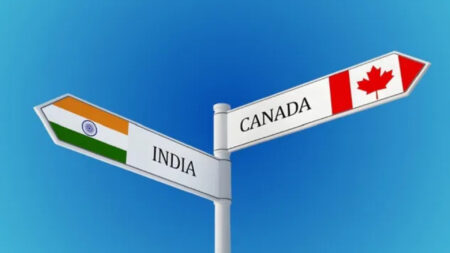When its fighters closed access to the once heavily fortified neighbourhood, the Embassy asked the Taliban to shepherd Indians.
As the first C-17 heavy-lift transport aircraft of the IAF evacuated around 40 staffers on August 16, the second one brought back around 150 people, including the ambassador, other diplomats, security officials and several journalists and stranded Indians.
On August 17, India completed the evacuation of all its diplomats and other staff members from the Afghan capital under a “difficult and complicated” exercise, effectively closing its mission for the second time since 1996 when the militant group captured power.
The mission to evacuate around 200 people, including the Indian envoy and other staffers in two military aircraft, was accomplished with support from the US.
The next day, the Kabul airport witnessed unprecedented scenes of desperate residents rushing into it in an attempt to flee the country, fearing the Taliban’s brutality.
India’s External Affairs Minister S Jaishankar, after the second aircraft landed in Hindon near Delhi, tweeted, “Movement of the Indian Ambassador and the Embassy staff from Kabul to India was a complicated exercise. Thanks to all those whose cooperation and facilitation made it possible.”
And, the news agency AFP unfolded the dramatic story of India’s midnight evacuation mission from Afghanistan, escorted by the Taliban.
How was the situation?
Outside the Indian Embassy’s main iron gate in Kabul, a band of Taliban fighters awaited, armed with machine guns and rocket-propelled grenade launchers.
Within the compound were 150 Indian diplomats and nationals, growing increasingly nervous as they watched news of the Taliban tightening their grip on the capital, which they took a day earlier without a fight. Their position was a precarious one.
Pakistan had long been the Taliban’s biggest supporter, using the country for so-called strategic depth in never-ending battles, honest and diplomatic, with arch-rival India.
India, in turn, strongly reversed the government that took over when the Taliban ejected, earning them hatred and enmity from the hardline Islamist group.
However, the Taliban fighters outside the Indian Embassy weren’t there to exact revenge but rather to escort them to Kabul airport, where a military aircraft was on standby to evacuate them after New Delhi decided to shut its mission.
The Evacuation
Some fighters waved and smiled at the passengers as the first two dozen vehicles drove out of the Embassy late August 16.
Someone guided them towards the street leading out of the city’s green zone and on the main road to the airport.
The previous day, the fighters closed access to the once heavily fortified neighbourhood after capturing Kabul. The Embassy decided to ask the Taliban to shepherd the Indians out.
A quarter of the 200 people gathered at the foreign mission had already been flown out of Afghanistan before the country’s new leaders took complete control of the city.
“As we were evacuating the second group, we faced the Taliban, who refused to allow us to exit the green zone,” said an official who left with the group on August 16.
“We then assured to contact the Taliban and ask them to escort our convoy out,” was also added.
With one diplomat equating the experience to “house arrest“, two separate pledges of an escort failed to materialise during the day, unnerving the large group bunkered down at the Embassy.
As the cars finally left the compound and commenced the five-kilometre (three-mile) journey to the airport, it had been dark for several hours.
With passengers passing each minute in continual fear of a potential attack, the snail-paced journey took five hours.
Unfamiliar checkpoints were there, and thousands of people displaced by the war were along the road. In intervals, the Taliban fighters accompanying the Indian convoy jumped out of their vehicles and aimed their guns at the crowds, forcing them to step back.
A man who appeared to be commanding the troops fired a few rounds in the air to scare back a large group gathered around one intersection. The escort departed once the convoy arrived, where American soldiers took positions and coordinated flights.
After another wait of two hours, the group boarded a C-17 Indian military transport plane that took off at dawn, landing at an air force base in the West Indian state of Gujarat later that morning.
“I’m so happy to be back, India is paradise,” Shirin Pathare, an Air India employee flown out of Kabul, told AFP as he stepped off the aircraft.












